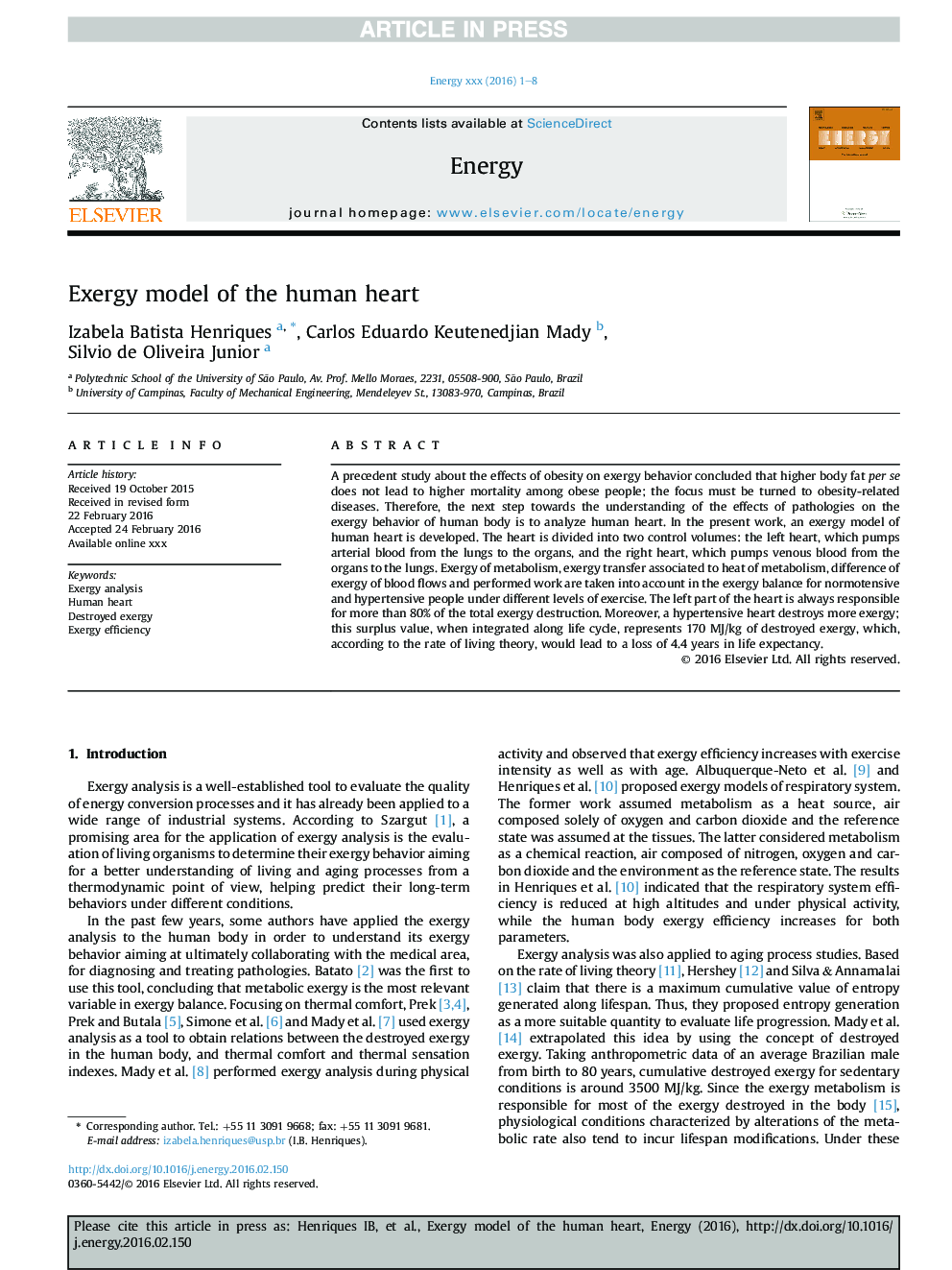| Article ID | Journal | Published Year | Pages | File Type |
|---|---|---|---|---|
| 5477167 | Energy | 2016 | 8 Pages |
Abstract
A precedent study about the effects of obesity on exergy behavior concluded that higher body fat per se does not lead to higher mortality among obese people; the focus must be turned to obesity-related diseases. Therefore, the next step towards the understanding of the effects of pathologies on the exergy behavior of human body is to analyze human heart. In the present work, an exergy model of human heart is developed. The heart is divided into two control volumes: the left heart, which pumps arterial blood from the lungs to the organs, and the right heart, which pumps venous blood from the organs to the lungs. Exergy of metabolism, exergy transfer associated to heat of metabolism, difference of exergy of blood flows and performed work are taken into account in the exergy balance for normotensive and hypertensive people under different levels of exercise. The left part of the heart is always responsible for more than 80% of the total exergy destruction. Moreover, a hypertensive heart destroys more exergy; this surplus value, when integrated along life cycle, represents 170Â MJ/kg of destroyed exergy, which, according to the rate of living theory, would lead to a loss of 4.4 years in life expectancy.
Related Topics
Physical Sciences and Engineering
Energy
Energy (General)
Authors
Izabela Batista Henriques, Carlos Eduardo Keutenedjian Mady, Silvio de Oliveira Junior,
